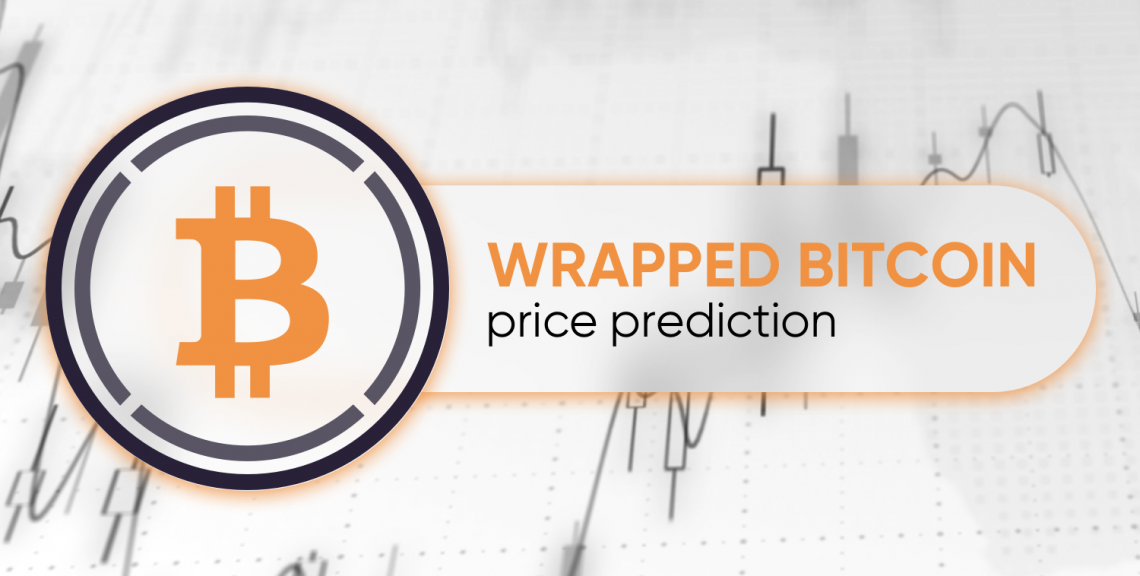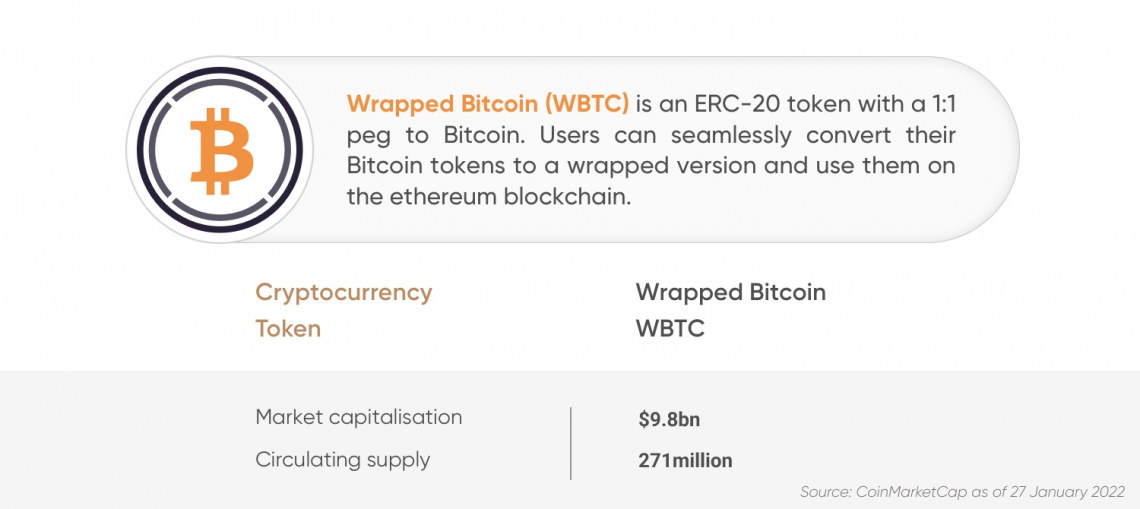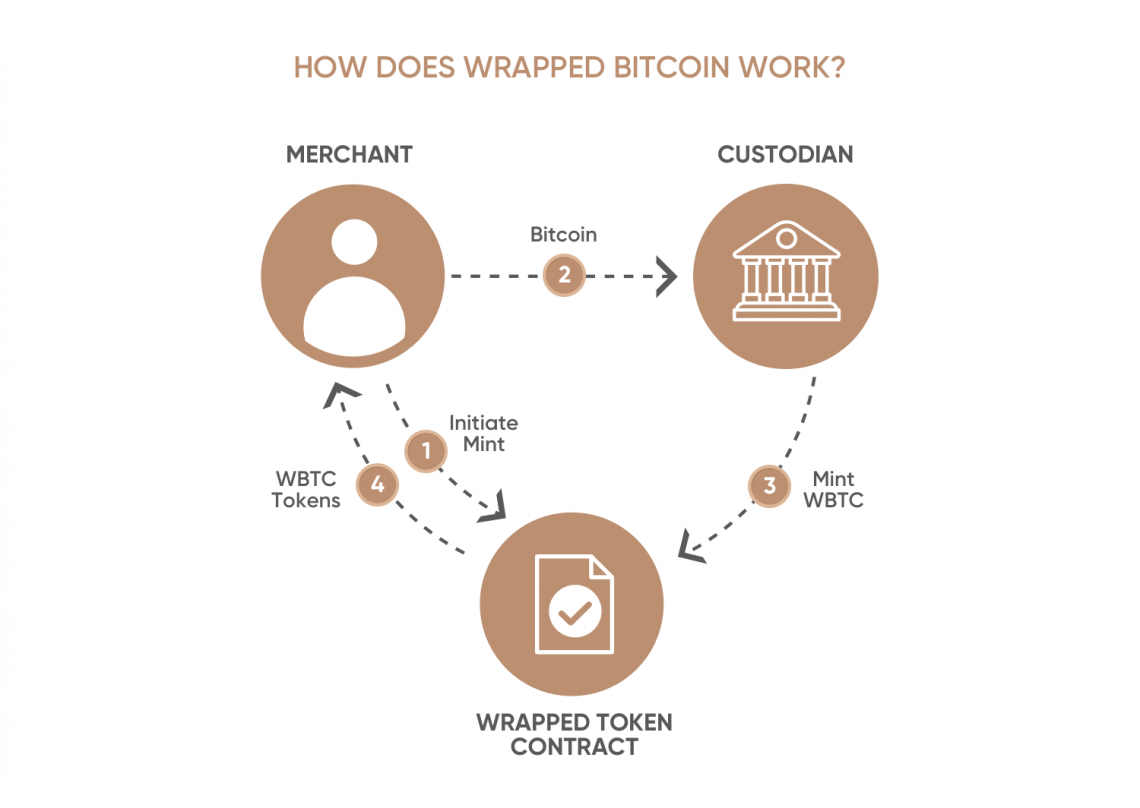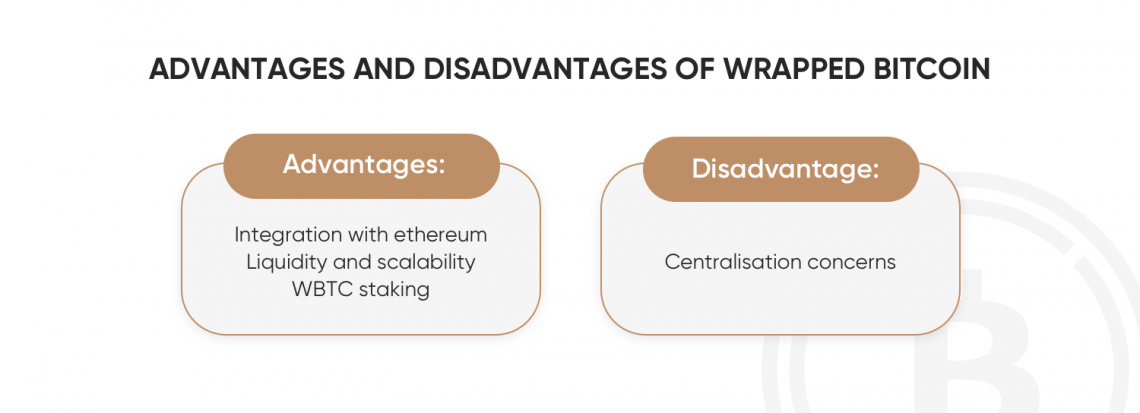Wrapped bitcoin (WBTC) price prediction: Will it recover in 2022?

Decentralised Finance (DeFi) enables cryptocurrency holders to profit from staking and funding liquidity pools. A tokenised version of bitcoin (BTC) running on the Ethereum blockchain, wrapped bitcoin (WBTC) allows BTC holders to participate in this DeFi ecosystem.
The global cryptocurrency market exceeded the $3trn market capitalisation for the first time In November 2021. During the same period, bitcoin (BTC) reached all-time highs of $68,789 according to CoinMarketCap. Wrapped bitcoin (WBTC) – a token mimicking the price of BTC – followed the same pattern.
However, investors’ anticipation for a sustained bull run came to a halt when the global cryptocurrency market fell sharply following the historic highs. At the time of writing (26 January,) wrapped bitcoin was trading at $36,210, down 47% from its November high.
Will the WBTC’s value recover later this year? First, let’s consider the project’s fundamentals and latest developments to get a clearer view of a plausible wrapped bitcoin price prediction.

What is wrapped bitcoin (WBTC)?
Launched in 2019, wrapped bitcoin (WBTC) is the compatible version of bitcoin for the Ethereum network and platforms built on its blockchain. WBTC is a token with 1:1 peg to bitcoin, which means that bitcoin holders can easily convert their BTC to the wrapped version and use it across the Ethereum network.
As many decentralised applications are built based on the Ethereum blockchain, most of them work under ERC-20 standards. WBTC is the ERC-20 token version of bitcoin that enables its holders to earn from the opportunities that DeFi offers.
Wrapped BTC allows bitcoiners to earn interest in platforms such as Compound, funding liquidity pools for APY (annual percentage yield), and participate in DEXs such as Uniswap. For example, the DeFi lending platform Hodlnaut offers an APY of 7.46% for the first two wrapped bitcoins deposited.
WBTC brings more liquidity to DeFi. As the cryptocurrency with the highest market capitalisation, bitcoin has gathered a huge user base and pool of liquidity, which can now be integrated with the Ethereum network. Since the value is pegged to bitcoin, BTC holders will no longer have to exchange their coins for different ERC-20 tokens but just wrap their bitcoins instead.
Additionally, other decentralised applications can benefit from the increased liquidity provided by a BTC token, as WBTC simplifies creating smart contracts using bitcoin. For example, bitcoin payments can be used in decentralised applications such as lending protocols, funds, prediction markets and token sales.

How does wrapped bitcoin work?
According to WBTC’s whitepaper, WBTC tokens are created under the centralised model for token assets. This means that assets are stored by an organisation that publishes proof of reserve. These ‘custodians’ store bitcoins in a smart contract and issue WBTC tokens in return.
Another key characteristic of WBTC tokens is that instead of relying on a single institution, diverse entities are involved in the validation process, taking part in the BTC to WBTC swap. In its whitepaper, WBTC explains that this process happens in a multi-signature chain and requires everyone’s approval.
Further, the WBTC network comprises four operational pillars:
Custodian: The term custodian refers to the institution that owns the asset and controls the minting process. For example, BitGo is one of the custodians of WBTC.
Merchant: Merchant is the term used to refer to the party to whom wrapped tokens are minted and burned. Merchants are crucial in the distribution of the WBTC since they hold the keys to the minting of new tokens and the burning of existing tokens. Currently, two of the WBTC network's official merchants are Kyber and Republic Protocol.
User: The term ‘user’ refers to the holders of the WBTC, who can use it to transact in the Ethereum ecosystem just like any other ERC-20 token.
WBTC DAO member: A multi-signature contract governs contract updates and the rules for adding or deleting custodians and merchants. Institutions own the contract’s keys as part of the WBTC DAO.

Advantages and disadvantages of wrapped bitcoin
There are several major points we can highlight as wrapped bitcoin benefits.
Ethereum integration. Ethereum is the largest network for dApps. According to State of the dApps, it’s home to around 3,000 decentralised applications. These become available for BTC owners with the help of wrapped bitcoins.
Liquidity and scalability. Integrating bitcoin liquidity into Ethereum’s network helps fill the gap between DeFi platforms, which may lack the necessary liquidity for executing fast transactions. Since WBTC exists in the Ethereum network directly, rather than Bitcoin’s, transactions with WBTC are faster and cheaper.
WBTC staking. This popular DeFi functionality is now available for BTC owners. Traders can lock their wrapped BTCs in a smart contract for a predefined time in exchange for rewards.
There is just one disadvantage of wrapped tokens, and wrapped bitcoin in particular.
Wrapped tokens are sensitive to centralisation because they depend on the issuing platform. The issue emerges because wrapping can’t be performed automatically by a smart contract on the Ethereum blockchain but is conducted via a central program. This could open the door to manipulation and undermine the decentralisation principle of the blockchain industry.
The creator of Ethereum, Vitalik Buterin, expressed his concerns over the centralised nature of wrapped tokens on Twitter back in May 2020:

Wrapped bitcoin news and price drivers
The project has undergone a number of significant milestones and developments, which may drive the wrapped bitcoin value.
Collaboration with BitPay
WBTC network partnered with Bitpay, a bitcoin payment service provider, in January 2019. As an outcome of this arrangement, WBTC became a payment option on BitPay, enabling users to conduct transactions using WBTC as a medium of exchange.
According to the press release, the ability to transact in WBTC provides a bridge to the Ethereum network for blockchain traders, institutions and decentralised applications (dApps), while keeping exposure to bitcoin.
Listing on Coinbase
Coinbase, the second-largest cryptocurrency exchange by trading volume, listed WBTC on its network in October 2020, enabling users to exchange WBTC for other tokens on the platform.
Additionally, it enabled Coinbase clients to buy, sell, convert, transfer, receive and store WBTC using the Coinbase Android and iOS mobile applications.
Partnership with Hodlnaut
Hodlnaut, a cryptocurrency borrowing and lending platform, launched support for WBTC in July 2021, allowing customers to earn a 6.2% annualised percentage yield on WBTC.
Additionally, Hodlnaut integrated WBTC into its Token Swap tool. As a result, Hodlnaut users gained easy access to WBTC without having to find a merchant to wrap their BTC. People could use Hodlnaut to exchange its tokens for WBTC at a zero-fee rate.
WBTC/USD price analysis
Wrapped bitcoin vs bitcoin: what’s the difference? The fundamental difference between bitcoin (BTC) and wrapped bitcoin (WBTC) is that WBTC is a tokenised version of BTC compatible with the Ethereum network. Every wrapped bitcoin is backed by one bitcoin. This means the price for both cryptocurrencies should be the same.
WBTC has mimicked BTC’s price performance and has yielded a ROI of 990% since its inception, according to CoinMarketCap. The token showed a bullish start in 2021 and continued moving in a bullish trajectory to reach $41,338 on 8 January. However, bears pushed the price back to $30,431 on 27 January. The price rebounded and WBTC reached $63,436 on 13 April.
Following a broader bearish market, the WBTC token declined to $34,904 on 23 May and bottomed to $29,508 on 20 July. WBTC declined by more than 53% between the April and July low.
A fresh leg of bull took the WBTC price to $52,565 on 6 September and then to its all-time-high of $68,601 on 10 November. After reaching the high, WBTC started trading in a bear market and closed the year at $46,434 as of 31 December 2021.
Cryptocurrencies didn’t find a favourable start to 2022, and most coins have seen a massive slump over the past few days. Similarly, WBTC declined to a 90-day low of $34,467 on 22 January. At the time of writing (27 January), WBTC was trading at $36,365, with a market capitalisation of $9.86bn.

Wrapped bitcoin (WBTC) price prediction: Targets for 2022, 2025 and 2030
On 27 January 2022, CoinCodex’s short-term WBTC sentiment was bearish, with seven indicators showing a bullish signal and 21 bearish.
Almost all daily and weekly simple moving averages and exponential moving averages (except for the 100-day SMA and EMA) gave ‘sell’ signals. The volume-weighted moving average (VWMA) was also bearish.
The moving average convergence divergence (MACD), stochastic RSI (stoch RSI), and Williams percent range were neutral. Meanwhile, the average directional index (ADX), the relative strength index (RSI) and Hull moving average (HMA) were bullish.
The WBTC price prediction from CoinCodex suggested the price could slightly increase 0.30% to reach $ 36,600 by 1 February 2022.
Algorithm-based forecasters gave longer-term wrapped bitcoin crypto price predictions (as of 27 January):
Wallet Investor has a bullish WBTC prediction. It expected the average price could reach $63,401 by the end of 2022 and $154,791 by 2025. The five-year estimate for WBTC/USD indicated that it could hit $187,182 in January 2027.
Meanwhile, Digital Coin has more conservative target prices for the WBTC token. It estimated the average price of WBTC in 2022 could be $50,510, moving up to $57,533 in 2023, $73,278 in 2025 and $154,555 in 2029.
According to Price Prediction's wrapped bitcoin prediction, the average price of WBTC/USD could reach $55,066 in 2022, $175,557 in 2025, and $1,041,712 in 2030.
When looking for a wrapped bitcoin crypto price predictions, bear in mind that analysts’ and algorithm-based projections can be wrong. The WBTC forecasts are based on fundamental and technical studies of the cryptocurrency’s past performance, which offers no guarantee of future results.
It’s essential to do your own research and always remember that your decision to trade depends on your attitude to risk, your expertise in the market, and your investment portfolio spread. You should never invest money that you cannot afford to lose.
FAQs
Is wrapped bitcoin a good investment?
Wrapped bitcoin (WBTC) is a cryptocurrency token based on Ethereum, pegged to bitcoin's price performance. It aims to combine bitcoin’s liquidity with the DeFi functionality. Whether the WBTC token is a good fit for your investment portfolio depends on your circumstances and risk tolerance. You should estimate the level of risk you are ready to take before investing. And never invest money that you cannot afford to lose.
What will wrapped bitcoin be worth in 2025?
As of 27 January, forecasting services shared different targets for wrapped bitcoin price in 2025. According to Wallet Investor, WBTC could reach $154,791, whereas Digital Coin shared a more conservative prediction of $73,278.
Is wrapped bitcoin safe?
As any other cryptocurrency on the market, WBTC is highly volatile, which makes it a risky investment option.
Will the wrapped bitcoin reach $500,000?
Price Prediction forecasted on 27 January 2022 that the WBTC coin could surpass $500,000 by 2029. However, before making any financial decision, you should make your own research since algorithm-based forecasts could prove to be wrong.
Should I buy wrapped bitcoin (WBTC) or regular bitcoin (BTC)?
While bitcoin and wrapped bitcoin follow a similar price trend, they are two distinct cryptocurrencies with distinct functionality. Thus, your trading decision should be based on a cryptocurrency’s fundamental research and your investment objectives.
Markets in this article
Related topics




